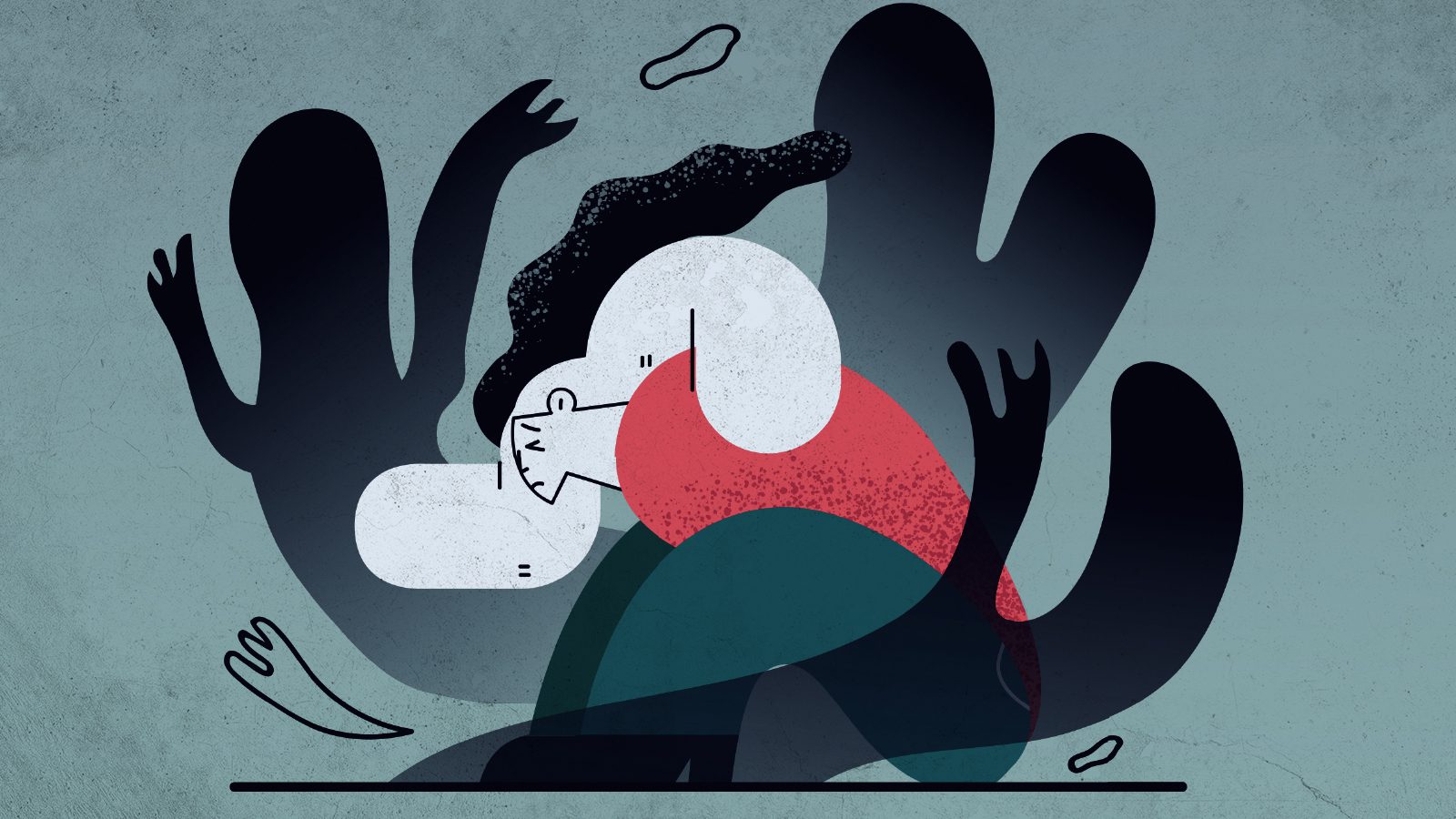Fear is a standard part of life. For some, it’s easy to push past. But some powerful fears are difficult to overcome and can significantly grip one’s life and soul. How can you fight back against anxiety that feels so overwhelming? Here’s how psychology explains how to face your fears and let them go.
1. Understand The Fears That You Face
It can seem counterproductive to release fear by focusing on it first. But if you don’t name the problem, you can’t solve it or overcome it. That’s why facing your fear is the first step in letting it go. To understand your fear, you can try the following methods:
· Accept Your Fears
A lot of times, it’s tempting to dismiss a fear because it seems or feels silly. You might say, “I have no right to be afraid of this. Lots of people face worse things.”
Or you may say, “I shouldn’t be afraid because someone I know isn’t afraid of this!”
These ways of thinking are counterintuitive. To release fear, we must accept its presence and admit to it. This includes not being ashamed of seemingly “silly” fears or anxiety not rooted in anything deep or complex. Not all fear has to stem from something severe and dire, and studies show that the biology of fear is about more than phobia and trauma.

· Write Down Your Fears
It is already a brave step in the right direction to name and detail your fears. You can write in a journal, on a piece of paper, or even type on a notes app or word document. Whatever works for you! The important part is locating your fears and putting them into the tangible form of words and digestible language. As much detail as possible, search for hidden worries, too.
· Seek The Roots Of Your Anxiety
Why do you have this fear? Some conerns are easy to trace. For example, maybe you’re afraid of dogs because you were chased by one when you were younger. But other fears are rooted in more complex things. Fears of failure, abandonment, and loss of control, for example, provide cover for more serious internal issues. Understanding the problems underscore your phobias can help demystify them, making them easier to process and comprehend.
· Get A Realistic Perspective
Lots of people fear things, but they do them anyway. Why? Because they have perspective. Getting perspective on your fear means understanding its true weight in the real world. What are the actual chances of it happening? What is the reward that may come if you brave it? Will a negative result be as bad as your fearful thoughts tell you? Realism is not the most capable combatant of fear, but it is still powerful and can be a good thing to hold on to. It reminds your logical brain that you are safe so that the rest of your brain has the energy to process less realistic emotions.
2. Redirect Your View On Your Fear
The way we view fear is what has the greatest chokehold on us. Redirecting that perspective can completely transform how you interact with fear and all of its madness. Here’s how to do this:
· Respond To Your Fears
When your fear begins to tell you something, put it on pause and respond to it, conversing with it as if it were a third party. Ask your fear why it feels this way, then validate those emotions and redirect them. For example, you may say, “I am afraid to accept this project because I am afraid that I will perform badly and be embarrassed.”
You can then respond, “It’s always scary to try something new and work on something so big. But think of all the experience we’ll gain and how much we’ll grow! It won’t matter if we performed badly in a year because those lessons will have moved us on to greater things.” This perspective shift is a great way to begin tackling the darkest voices of your fear.
· Be Open To Possibility
In the face of fear, it is easy to shut down and try to block everything out, but don’t fall into that trap. When something frightening happens, open your heart instead. Remind yourself that there is a chance this will not be what you fear. Remind yourself of reality and remain open to that reality. Remind yourself about what you have done to overcome your fear, and stay open to the idea that things will be different this time.
Maintaining openness bravely and boldly by focusing on silver linings will slowly but surely change your perspective to seek out the positivity in life, not the fear. Do note that we’re not referring to behaving foolishly or unwisely. If a particular approach isn’t working, you can change it without closing yourself off by saying, “Since that didn’t work, I am open to the possibility that this other method may work instead.” You can also say, “I know that there is something I can do that will make this work, and I am open to doing things in new ways to achieve that.”
· Respond To Fears With Surrender
This sounds like another counterproductive step, but it’s a huge one. Letting go of fear involves accepting that it exists and not getting worked up over it. When your fearfulness says, “But what if we mess up?” respond, “Then I surrender, and I’ll try again.”
This mantra reminds you that there is a tomorrow and that you can lose a battle without losing a war. When you release your fear, you silence the noise in your head by accepting its presence. It’s challenging to learn, but it’s powerful once you do.

3. Practice Calming Techniques For Anxiety
When you’re in the heat of fear, it can be difficult to calm down correctly, even after accepting it, responding to it, and being open to it. Your body sometimes takes a while to catch up to your mind’s decision. This is when you should try a few calming techniques. These are great ways to bring yourself back to reality and can aid in releasing fear. Here are some to try:
· Visualization
Visualization is the act of imagining something calming or positive. It’s a powerful way to face your fears and calm down from them. Studies deem it effective in managing anxiety responses. Go somewhere quiet and calm, sit or lie in a comfortable position, and relax as you envision your happy place.
Think of somewhere calming in nature and fully immerse yourself in that imagery. Ask yourself what pleasant scents you smell and what relevant sounds you hear in this visualized world. You’ll feel calmer very quickly! You can also use visualization to imagine overcoming a fear. Your brain will automatically pick up on that and will start to believe that it has already overcome the fear, making it easier to face it again later.
· Mindfulness
Mindfulness is the act of being present in the here and now. It can be performed in a meditative state but help in everyday life. To achieve mindfulness, pay attention to your body and the world around you. When you feel fear, what parts of you show signs of it? Is your heart racing? Are your palms sweating? Then, look at your thought and detach yourself from them. Watch them pass over your head as a witness would watch cars going by. Do not actively engage with them. Watch them sail by.
· Speak To Yourself With A Kind Voice
A lot of people become their own worst bullies in times of fear. You might speak to yourself with judgment or shame or be disappointed that you didn’t overcome it this time. Don’t do this. Instead, talk to yourself kindly. Pat yourself for trying and compliment yourself on what you did well and how you handled the situation. Commend yourself for being brave and for continuing to be brave. When you treat yourself like a friend instead of an enemy, fears are less frightening.
4. Get Professional Help For Anxiety
You may need help to face the things that frighten you, and there’s no shame in admitting that reality. Debilitating phobias, such as ones tied to mental health conditions and disorders or rooted in intense phobias, can be too difficult to fight on your own. Professional therapists can help people overcome these more complex fears, and research finds them effective!
Fears can be rooted in anxiety disorders, post-traumatic stress disorders, and eating disorders or be born from genuine phobias that impact everyday life. If you find yourself constantly thinking about your fear or having everyday life made more difficult because of it, you may need professional aid. Treatment options include:
· Cognitive Behavioral Therapy (CBT)
This type of fear-facing treatment involves desensitizing you to your fears via small steps that replace negative thoughts and reactions with neutral or positive ones.
· Exposure Therapy or Immersion Therapy
These types of therapy involve regularly exposing you, in small incremental ways, to the subjects of your phobia. The goal is to teach comfort or neutrality in the face of different fear-creating experiences and topics by getting you used to those subjects.
· Acceptance and Commitment Therapy (ACT)
This type of treatment teaches acceptance, allowing you to view your phobias in a less threatening way. This then minimizes the impact of your worry on your everyday life.
· Psychoanalytic Therapy
Psychoanalysis involves delving deep into the roots of various fears, especially those caused by trauma or anxiety disorders. The goal is to uproot the source of your fear, so you are no longer affected by them, as the original problem is resolved or mostly resolved.
Professional help can also assist by training you with relaxation techniques and giving you a safe space to vent or talk about these fears, which is already helpful.

Final Thoughts On How To Face Your Fears And Let Them Go
Fear is temporary, and it can be worked through. Understand your anxiety, redirect your perspectives on them, and learn to calm your mind and body when fear takes over. If you need help, you can get professional aid to teach you the best ways to work through more complex or intense fears and phobias.


















